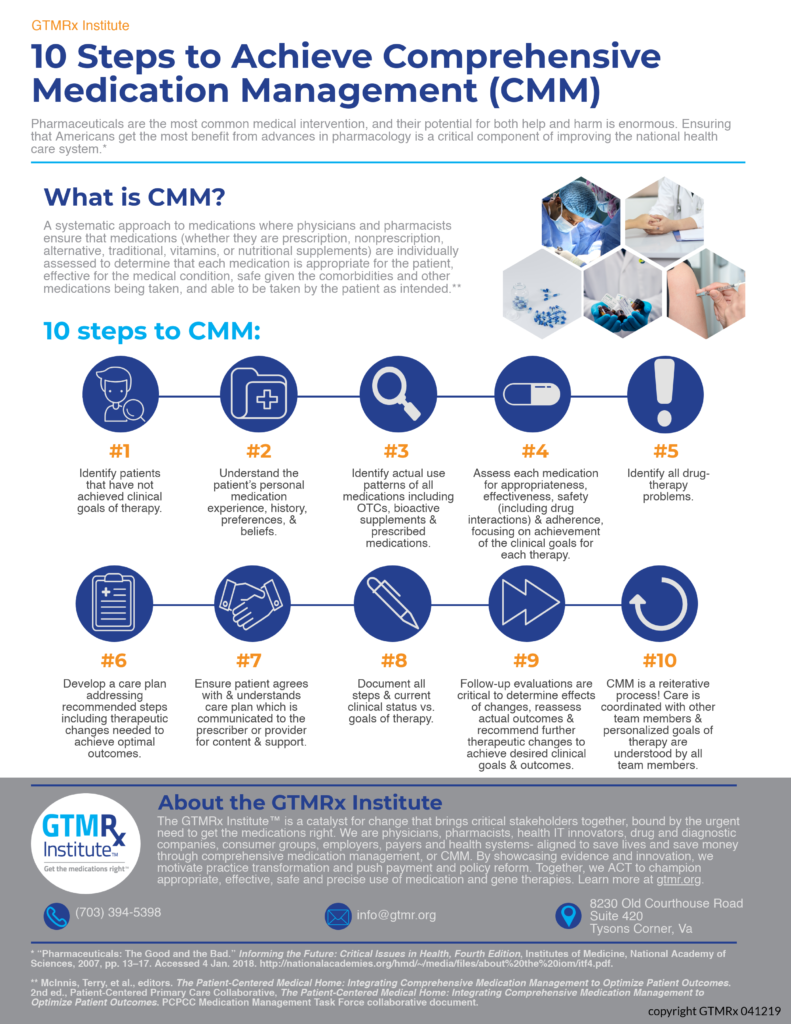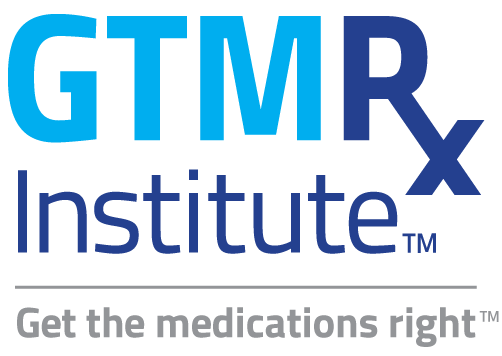Pharmaceuticals are the most common medical intervention, and their potential for both help and harm is enormous. Ensuring that Americans get the most benefit from advances in pharmacology is a critical component of improving the national health care system.1
The GTMRx Institute defines CMM as:
The standard of care that ensures each patient’s medications (whether they are prescription, nonprescription, alternative, traditional, vitamins, or nutritional supplements) are individually assessed to determine that each medication is appropriate for the patient, effective for the medical condition, safe given the comorbidities and other medications being taken, and able to be taken by the patient as intended.2
Learn more about the reiterative 10 step process in the infographic to the right.
1“Pharmaceuticals: The Good and the Bad.” Informing the Future: Critical Issues in Health, Fourth Edition, Institutes of Medicine, National Academy of Sciences, 2007, pp. 13–17. Accessed 4 Jan. 2018. http://nationalacademies.org/hmd/~/media/files/about%20the%20iom/itf4.pdf.
2 McInnis, Terry, et al., editors. The Patient-Centered Medical Home: Integrating Comprehensive Medication Management to Optimize Patient Outcomes. 2nd ed., Patient-Centered Primary Care Collaborative, The Patient-Centered Medical Home: Integrating Comprehensive Medication Management to Optimize Patient Outcomes. PCPCC Medication Management Task Force collaborative document.


